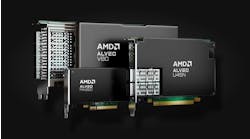Solving RDHX Deployment Challenges for Rack and Roll Data Centers
Commissioning and deploying cooling and networking for data centers is a challenge, particularly as data centers evolve to meet the needs of fast-growing and ever-changing IT infrastructure. When data centers need to plan for infrastructure before they are ready to install IT, it can create even more challenges. That is where wall-of-cool rear door heat exchanger (RDHX) solutions come in.
Wall-of-cool solutions are free-standing, floor-anchored, modular support structures used by data center operators to deploy and commission rear door heat exchangers at full capacity without relying on building structures for stability. If they are compliant with the proper industry stability standards like UL2416, they can support the weight of an RDHX independent of rack or building structure.
Typically, RDHX units are mounted directly to the IT rack and use the rack frame as the support structure. In the past, if a data center wanted to deploy the RDHX independent of the rack, they would require a custom structure built to support the unit integrated with the building structure. These custom solutions are very costly due to both the material and skilled labor they require.
The wall-of-cool method allows data center operators to deploy, install and commission rear door heat exchangers before they have IT equipment in place. The freestanding nature of this equipment allows networking cabinets to be rolled directly up to the rack and secured with a clamp for easy rack-and-roll positioning. Wall of cool solutions are modular allowing the RDHX to be ganged together, creating the wall of cooling.
This configuration has many benefits for different kinds of data centers:
Colocation data centers can use wall-of-cool solutions to deploy and commission their cooling infrastructure with MEP trades onsite even before the ITE is available. This allows colocation data centers to scale their customers compute by adding additional racks without having to update cooling infrastructure. The wall of cool also acts as a demarcation point between the mechanical infrastructure and the ITE.
In lab environments, where operators are constantly moving equipment in and out, wall-of-cool systems allow operators to detach and reinstall racks without moving the cooling system. Importantly, this technology also enables the installation and commissioning of heat exchangers before IT equipment is in place.
For hyperscalers where equipment is swapped out every 2-3 years, detaching RDHX units from racks then reattaching it can be huge time waster for data center operators when it comes to servicing. This downtime is unacceptable for any data center but is an even bigger blocker for AI deployments. By easing these challenges, wall-of-cool solutions can help extend the life of cooling infrastructure for multiple generations of compute upgrades.
Wall-of-cool solutions greatly simplify the installation of data center IT. When selecting wall-of-cool solutions, look for these characteristics:
- Find solutions that allow for single-person setup and are designed to be anchored to the floor.
- Make sure racks support both top and bottom feed applications and includes mounting points for overhead cable pathways.
- Look for raised floor hose ingress, which facilitates hose management, and tool-less clamps that are universal and work with a variety of rack designs to secure the network frame to the cool wall rack.
- Check to make sure you are purchasing UL2416 stability rated solutions with minimal protrusion into aisles and compatibility across rack manufacturers.

Kevin Roof
Kevin Roof is a Senior Product Manager at nVent, where he leads nVent’s Data Center Solutions product portfolio for liquid cooling and networking equipment. Kevin brings over 6 years of data center infrastructure experience with a focus on developing scalable and sustainable solutions for data centers. Kevin holds a bachelor's degree in Mechanical Engineering from the University of Minnesota.






